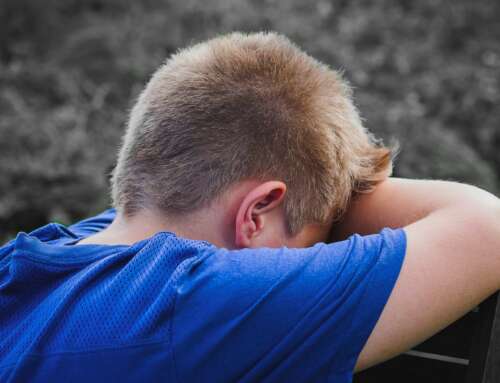Cole Skinner was hanging from a wall above an abandoned quarry when he heard a car pull up. He and his friends bolted, racing along a narrow path on the quarry’s edge and hopping over a barbed-wire fence to exit the grounds.
The chase is part of the fun for Skinner and his friend Alex McCallum-Toppin, both 15 and pupils at a school in Faringdon, UK. The two say that they seek out places such as construction sites and disused buildings—not to get into trouble, but to explore. There are also bragging rights to be earned. “It’s just something you can say: ‘Yeah, I’ve been in an abandoned quarry’,” says McCallum-Toppin. “You can talk about it with your friends.”
Science has often looked at risk-taking among adolescents as a monolithic problem for parents and the public to manage or endure. When Eva Telzer, a neuroscientist at the University of North Carolina in Chapel Hill, asks family, friends, undergraduates or researchers in related fields about their perception of teenagers, “there’s almost never anything positive,” she says. “It’s a pervasive stereotype.” But how Alex and Cole dabble with risk—considering its social value alongside other pros and cons—is in keeping with a more complex picture emerging from neuroscience. Adolescent behaviour goes beyond impetuous rebellion or uncontrollable hormones, says Adriana Galván, a neuroscientist at the University of California, Los Angeles. “How we define risk-taking is going through a shift.”
Adolescents do take more risks than adults, and the consequences can include injury, death, run-ins with the law and even long-term health problems. But lab studies in the past decade have revealed layers of nuance in how young people assess risks. In some situations, teenagers can be more risk-averse than their older peers. And they navigate a broader range of risks than has typically been considered in the lab, including social risks and positive risks—such as trying out for a sports team. These types of behaviour seem to have different effects on the brain.
How adolescents interact with risk is important. Work on the neural underpinnings of risky behaviour can inform guidelines and laws for teens who drive, for example, or the punishments they receive for violent crimes. Understanding how the teenage brain evaluates risk could even reveal predictors of mental-health conditions such as schizophrenia and depression, which often emerge in adolescence.
In more ways than one, there is a lot going on in a teenager’s head. “In fact, it’s just beautiful,” says B. J. Casey, a neuroscientist at Yale University in New Haven, Connecticut. “It’s amazing that it unfolds correctly most of the time.”
Rebel With a Cause
Adolescence is a perilous period. The death rate among 15- to 19-year-olds worldwide is about 35 percent higher than that among 10- to 14-year-olds. And risky behaviours are linked to many of the major threats to life during this time (see graphic below). Road injuries are the biggest cause of death for adolescents globally. Self-harm and other forms of violence also rank highly. Plus, some practices that can lead to poor health in adulthood—such as use of tobacco or alcohol, or sedentary lifestyles—often stem from poor choices made in the teenage years. So, risky behaviour has been a preoccupation for scientists.
Early theories focused on a perceived imbalance in the developing brain. Areas linked with impulsivity and heightened sensitivity to reward, especially in the social realm, get an early boost in activity, whereas those governing cognitive processes such as working memory develop smoothly throughout adolescence.
Neuroscientists likened the emerging picture of the teenage brain to that of a car with a revving accelerator and faulty brakes. This fit the developmental data, but not the fact that many teenagers show no proclivity for risk-taking, says Ted Satterthwaite, a psychiatrist and neuroimaging researcher at the University of Pennsylvania in Philadelphia. A 2016 survey of more than 45,000 US teenagers found that 61 percent had not tried cigarettes by age 17–18, for example; some 29 percent had never drunk alcohol.
Most neuroscientists now acknowledge that neural systems developing at different rates do not mean that the brain is unbalanced. “It’s a vulnerable period, but it’s not vulnerable just because there’s something going wrong with their brains,” says Satterthwaite.
And so work has shifted to looking at a broader range of risks and environmental influences. For many teenagers, says Dahl, there is risk in relatively benign experiences, such as standing up for a friend or asking someone on a date. “Taking a social risk—those feel more salient.”
– Kerri Smith
Read More: Sex, Drugs and Self-Control
Image Source: Flickr.com








Leave A Comment